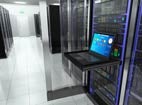It may come as a surprise to some people, but storage networking is alive and well in the enterprise and shows no signs of giving ground to all-flash or all-cloud solutions.
Yes, they can become cumbersome and complex when scaled up to enterprise-class environments, but the fact remains that SAN and NAS both have proven track records when it comes to moving data in and out of centralized storage systems. If I were a betting man, though, I would give the edge to NAS as the enterprise ramps up its reliance on virtual- and cloud-based infrastructure.
For one thing, NAS is cheaper. Research and Markets cites cost-efficiency as one of the top drivers for the expected 22 percent annual growth in NAS solutions over the next two years. Small and midsize organizations in particular are eager to build out internal infrastructure both for the deployment of private clouds and to maintain control over mission-critical data and applications, and NAS provides for low-cost, rapid scale-out storage using standard TCP/IP protocols. Also, NAS does not require a high degree of specialized training for crucial tasks like management and configuration.
And with new systems like Netgear’s ReadyNAS 716 platform, enterprises can gain full 10GBase-T Ethernet support on a simple desktop form factor. The device features quad-core E3-1225 processors and 16 GB of ECC memory to support twin 10GbE and twin single Gigabit Ethernet network ports, giving it the ability to support 500 concurrent users with enough bandwidth to stream their own Blu-ray video. Top capacity for the base model is 24 TB over six hot-swappable drive slots, although three expansion arrays can be added with 20 TB each.
New solutions are also making it easier to incorporate NAS into hybrid cloud architectures. Avere Systems recently introduced the Avere Cloud NAS service aimed at tying legacy NAS architectures with the Amazon S3 and Glacier clouds. The system scales CPU and network I/O in support of up to 450TB in on-premises storage, which allows the enterprise to keep highly active or mission-critical data close to home where it can be retrieved and updated quickly. At the same time, the system’s FlashCloud software running on the company’s FTX edge filers provides for extensibility into the cloud under a single global namespace.
Still, for those not familiar with NAS or file-based storage in general, the migration process can be daunting. Not only is it highly complex and dependent upon coordinated performance across multiple IT teams, but data stores quite often must be taken off line while the migration is ongoing, leading to poor performance among the workforce. Automation platforms like Data Dynamics’ StorageX are effective at managing both structured and unstructured data using policy-based engines that oversee crucial tasks like discovery, assessment, transfer and the migration itself.
NAS also has the advantage of fostering a device-friendly environment. Anything that can connect to an IP network using CIFS, NFS or other common protocols can link directly to the storage environment. SAN’s use of iSCSI or Fibre Channel for direct server-storage communications provides some advantages in volume management, data integrity and other features, but this comes at the expense of increased network complexity and, therefore, cost.
NAS, then, seems to provide a link between the silo-based architectures of the past and the virtual, cloud environments of the future. Ultimately, it may lose out to modular, Flash-based infrastructure, but not right away. Enterprises that are still comfortable with traditional networking but need to step up to dynamic storage environments will probably find NAS as the most reasonable choice right now.



